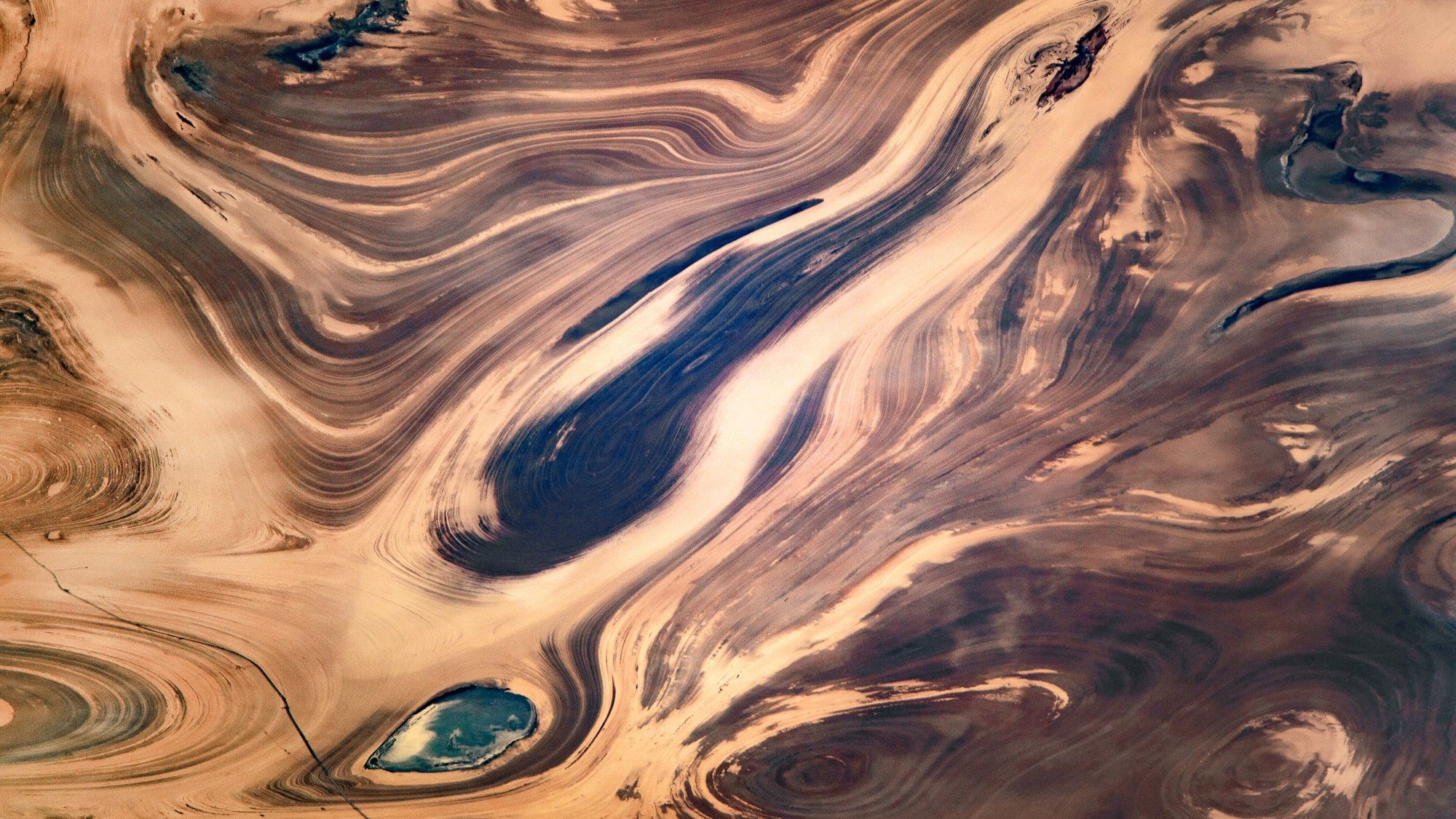[:ja]毎年6月17日は「砂漠化および干ばつと闘う世界デー」という国際デー(World Day to Combat Desertification and Drought)です。セルゲイ・リャザンスキー宇宙飛行士が投稿した、ISS撮影のイランのカヴィール砂漠です。

カヴィール砂漠(ペルシア語:دشت كوير)は、イラン北部、イラン高原にある長さ800km、幅320kmの砂漠です。南東にはそのままルート砂漠が続き、アフガニスタン、パキスタン、インドへと砂漠地帯が広がっています。古来から、マルコ・ポーロなど旅人が通商路として横断していました。夏の最高気温は50℃に達し、1月でも平均22℃で、雨はほとんど降りません。砂礫が広がるが、湿原、湖、ワジ(涸れ谷)があり、高さ40mの砂丘が嵐により出来ることから、観測されない降雨が少なからずあるものと推測されます。西部のナマク湖は4000km2あるカヴィール国立公園の一部として環境保護されています。
地上の様子はこちらです。
参考文献: Sergey Ryazansky’s Tweet
地球俯瞰画像を見る: LiVEARTH
[Earthview Wonders] No.1058: Dasht-e Kavir, Iran🇮🇷
June 17th is the “World Day to Combat Desertification and Drought” and here is the post by astronaut Sergey Ryazansky of Dasht-e Kavir, Iran captured from ISS.

Dasht-e Kavir (Persian: دشت كوير), also known as Kavir-e Namak and the Great Salt Desert, is a large desert lying in the middle of the Iranian plateau. It is about 800km long and by 320km wide, making it the Earth’s 24th largest desert. It contains some large salt plates in a mosaic-like shape. Dasht-e Kavir’s climate is arid; it receives little rain or snow. However, the mountains that surround it provide plenty of runoff—enough to create vast seasonal lakes, marshlands and playas. Temperatures can reach 50C in summer, and the average temperature in January is 22C. Daytime and nighttime temperatures can vary by as much as 70C over the course of a year. Rain usually falls in winter.
The local scenery on the ground is as follows.
Reference: Sergey Ryazansky’s Tweet
See earthview photo gallery: LiVEARTH[:en][Earthview Wonders] No.1058: Dasht-e Kavir, Iran🇮🇷
June 17th is the “World Day to Combat Desertification and Drought” and here is the post by astronaut Sergey Ryazansky of Dasht-e Kavir, Iran captured from ISS.

Dasht-e Kavir (Persian: دشت كوير), also known as Kavir-e Namak and the Great Salt Desert, is a large desert lying in the middle of the Iranian plateau. It is about 800km long and by 320km wide, making it the Earth’s 24th largest desert. It contains some large salt plates in a mosaic-like shape. Dasht-e Kavir’s climate is arid; it receives little rain or snow. However, the mountains that surround it provide plenty of runoff—enough to create vast seasonal lakes, marshlands and playas. Temperatures can reach 50C in summer, and the average temperature in January is 22C. Daytime and nighttime temperatures can vary by as much as 70C over the course of a year. Rain usually falls in winter.
The local scenery on the ground is as follows.
Reference: Sergey Ryazansky’s Tweet
See earthview photo gallery: LiVEARTH[:]